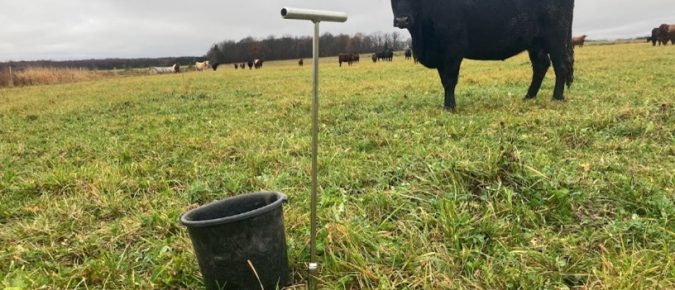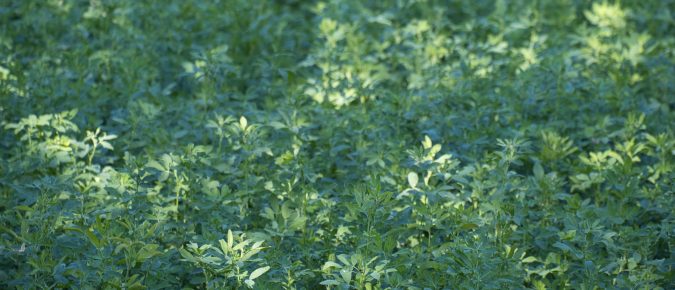Alfalfa is known as the “Queen of Forages” given its importance to the Wisconsin dairy and livestock industry. Wisconsin harvests more than one million acres of alfalfa annually. While some of these transactions include weighing every load harvested to ensure fairness to both the buyer and the seller, there are many acres and individual cuttings where both parties agree to a fixed price per acre instead.
The fourth Focus on Forage webinar in the 2023 series, Focus on Storage aims to provide WI farms and agricultural professionals with current research-based recommendations regarding hay bale and hay baleage storage and management.
The third Focus on Forage webinar in the 2023 series features alternative forage production information. Presenters are Bill Halfman, UW-Madison Division of Extension Beef Outreach Specialist; Dr. John Jones, UW Madison Soil Scientist; and Jason Cavadini, UW-Madison Division of Extension Grazing Outreach Specialist.
The second Focus on Forage session of 2023, Focus on Alfalfa, features Dr. Mark Renz, UW Professor and Extension Specialist; Steven Okonek, Division of Extension Crops/Soils Educator; Mike Bertram, Superintendent @ Arlington Research Station, and Dr. John Jones, UW Soil Science. The webinar was designed to assist farms and agronomists in their alfalfa management decision-making […]
Soil seems to be the hot-button topic of nearly every farmer-focused event and agricultural publication these days. While it’s ironic that this resource, which predates modern agriculture itself, has become the rising star of modern agriculture, it’s appropriate because soil is the foundation of everything we do. Few would argue that the health and long-term productivity of our soil is the most critical factor for the future of agriculture and society.
Stockpile grazing is a technique that can help minimize the high cost of winter feeding. A goal common to nearly all grazing operations is extending the grazing season as late into the year as possible. Using livestock to harvest forage is the most cost-effective method of feeding your animals, and every additional day of grazing has positive implications on farm finances.
The first Focus on Forage session of 2023, Focus on Corn Silage, features Dr. Joe Lauer, UW Corn Agronomist, Dr. Damon Smith, UW Plant Pathology, and Kevin Jarek, UW-Madison, Division of Extension Crops/Soils Educator.
Many grazing operations across Wisconsin may look similar during the growing season, but what differentiates them is winter. Graziers employ a variety of winter feeding strategies. For those who choose to keep their livestock outdoors year-round, bale grazing is a common approach. In bale grazing, bales are placed on pasture, often pre-set in a grid pattern prior to winter.
Legumes can play a significant role in grazing systems by adding nitrogen to the soil and boosting the protein content and palatability of the forage. Birdsfoot Trefoil is a legume that is not as common as many clover species but can play a specialized role in Wisconsin pastures.
“If you graze it, it will grow.” This variation of the old Field of Dreams adage is often the mantra of grazing influencers. And in many cases, adding livestock to a forage system can induce growth through disturbance and nutrient cycling.
The cold temperatures in early spring can cause some frost damage to alfalfa. Following are recommendations for evaluating damage and taking action.
There continues to be a lot of interest in corn silage harvested with a self-propelled forage harvester (SPFH) equipped with an aftermarket processor having cross-grooved processing rolls set for 2- to 3-mm roll gap and greater roll speed differential than has typically been used (32% versus 21%). Also, the developer of this processor recommends that […]















